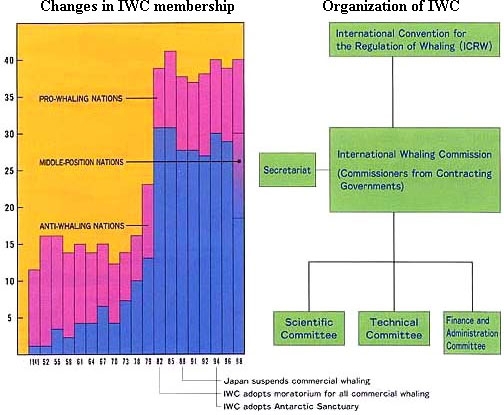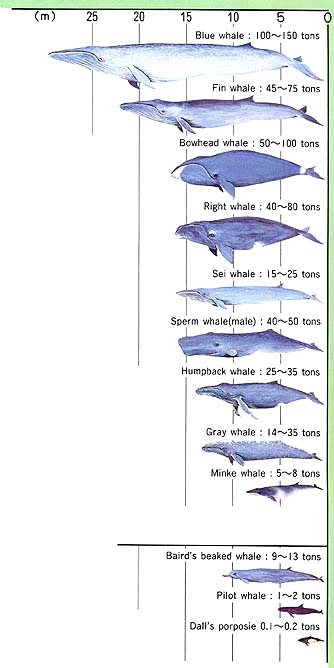Agriculture, Fisheries and Forest
IWC management
What is the IWC ?

The International Convention for the Regulation of Whaling, 1946, was formulated to ensure the conservation of whale species and the orderly development of the whaling industry. The International Whaling Commission (IWC) was established in 1948 to implement the Convention. Japan joined the IWC in 1951.
The United Nations Conference on the Human Environment held in 1972 recommended a 10-year moratorium on commercial whaling, but, in the same year, the IWC refused to concur with this recommendation on the grounds that it lacked scientific rationale. However, anti-whaling organizations worked to achieve a majority voting bloc to pass a moratorium on commercial whaling by recruiting 25 new members into the IWC in the period between 1972 and 1982. This resulted in the adoption of a moratorium on commercial whaling in 1982 and Southern Ocean Sanctuary in 1994. While the mandate for IWC to be an organization devoted to the management of whale resources based on scientific evidence is clearly stipulated in the Convention, a majority of member nations oppose the resumption of commercial whaling even for species whose resource status has been demonstrated scientifically to be at optimal levels of abundance. However, some of these nations are gradually starting to change this position. The IWC membership as of 2002 stood at 50 nations.
Whale species and their management

Species under IWC management
The 13 species subject to IWC management are listed in the Annex of Nomenclature of the Final Act of the 1946 International Convention for the Regulation of Whaling. The species listed are the sperm whale, the bottlenose whale, and the baleen whales. Among these are:
- The blue whale:
- This is the largest mammal on earth, with a maximum length of about 34 m. It reaches maturity at about 10 years of age and gives birth once every two or three years.
- The fin whale:
- Though not as large as the blue whale, it reaches maturity at about the same age, and gives birth at the same interval as the blue whale.
- The minke whale:
- This is the second smallest of the baleen whales (only the pigmy right whale is smaller), with a maximum length of 11 m. It is more fertile than other large baleen whales, reaching maturity at between 6 and 7 years of age and calving almost every year.
Species not under IWC management
Of the many species of cetaceans which are not managed by the IWC, the three of principal commercial interest to Japan are the Baird's beaked whale, the pilot whale and the Dall's porpoise.

